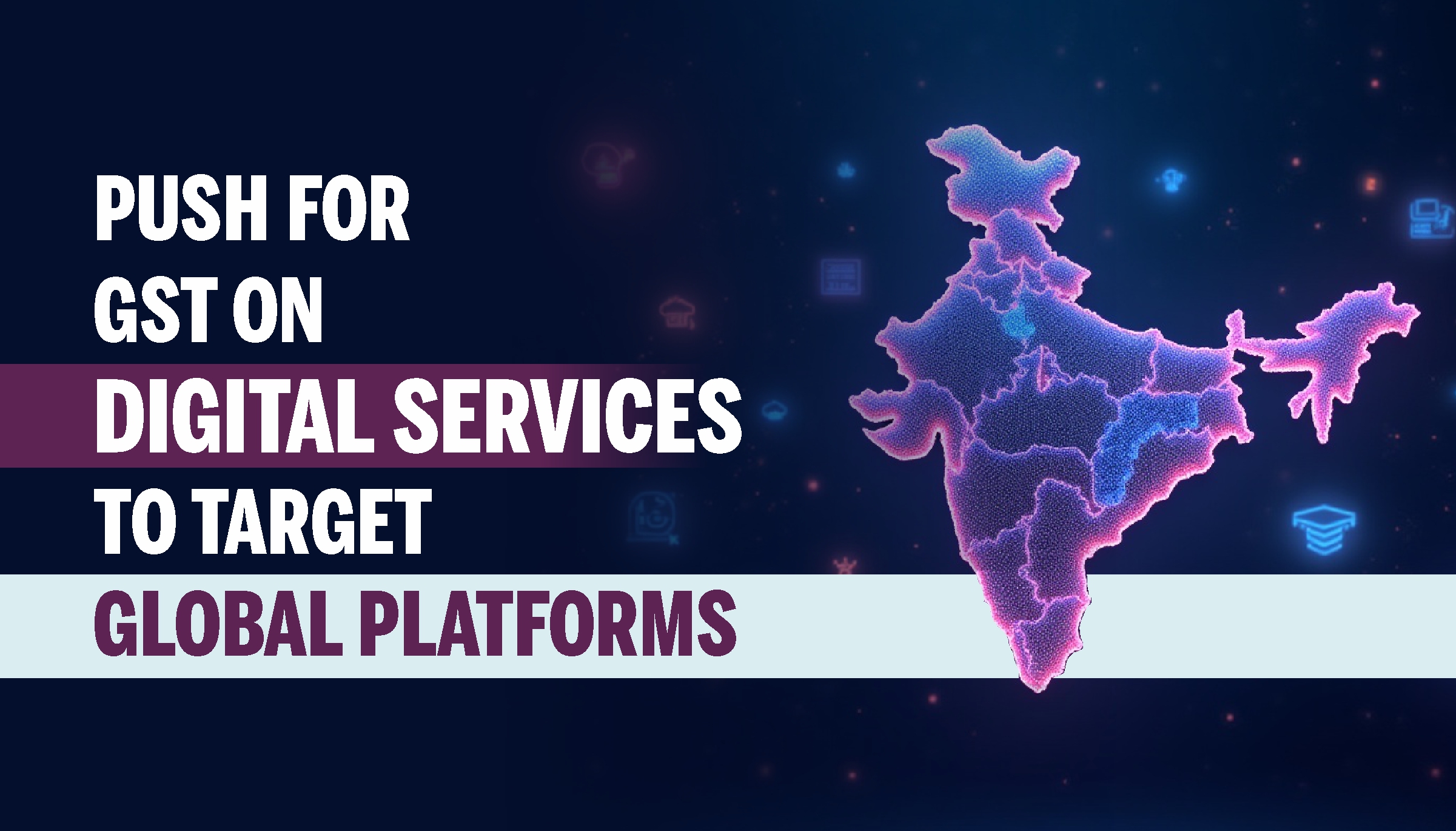Push For GST on Digital Services to Target Global Platforms

India’s rapid digitalisation has opened vast opportunities—and significant tax challenges. With the digital services market booming, India’s tax authorities are zeroing in on “GST on Digital Services” as a promising new revenue stream. As global platforms extend their reach into India, the Directorate General of GST Intelligence (DGGI) is sharpening its toolkit to ensure every eligible transaction falls within the GST net.
Understanding GST on Digital Services (OIDAR)
Under India’s Integrated GST (IGST) Act, digital services supplied from abroad to Indian consumers are classified as Online Information Database Access and Retrieval (OIDAR) services. Examples include cloud software, online courses, streaming content, digital advertising, gaming, and AI-driven tools. Since October 1, 2023, the definition of OIDAR has been broadened—removing exemptions like “minimal human intervention” and “non-commercial usage”—so virtually any digital service falls under its ambit.
Two compliance routes exist for foreign service providers:
-
Direct Registration: Providers register under GST in India and charge 18% IGST on each invoice. They file monthly returns (Form GSTR-5A) and remit tax collected from customers.
-
Reverse Charge Mechanism (RCM): If the recipient is a registered Indian business, the onus shifts to the Indian recipient to self-assess and pay GST under RCM, without the provider registering.
Surging Revenue from OIDAR Services
The impact of these changes is striking. GST collections from OIDAR services jumped from just ₹80 crore in FY 2017–18 to ₹2,675 crore in FY 2023–24—a more than 33-fold increase. This surge owes much to both the expanded legal definition and intensified enforcement by the DGGI, which has subpoenaed transaction data from banks and the Reserve Bank of India, and is exploring cross-border information-sharing agreements with foreign tax authorities.
Enforcement Tactics: From Warnings to Website Blocking
The DGGI’s strategy is multi-pronged:
-
Direct Outreach: Emails and notices to non-registered platforms such as cryptocurrency exchanges, cloud firms, and edtech providers.
-
Partner Engagement: Pressuring Indian businesses and payment processors (e.g., Pine Labs, Razorpay, Cashfree) to verify their overseas partners’ GST registration status.
-
Data Mining: Extracting transaction details from banks and RBI reports to identify unregistered players.
-
Legislative Proposals: Seeking explicit powers to block non-compliant foreign websites—a power currently beyond the GST law.
So far, 574 offshore entities have registered as OIDAR providers, including global names like Udemy, Canva, OVH, and Blackboard.
High-Profile Disputes Highlight Complexities
Several landmark cases underscore the challenges of taxing borderless services:
-
Binance: India’s ₹722 crore GST demand against the cryptocurrency exchange is under dispute in the Karnataka High Court, where Binance obtained a stay order.
-
Foreign Ad Platforms: Google and Facebook once faced GST demands on ad services; disputes over place of supply and threshold limits made for protracted litigation.
-
“Netflix Tax”: Though no major public case exists in India, the concept—taxing streaming subscriptions under OIDAR—has drawn attention to similar measures in Europe and Canada, suggesting potential friction if interpreted retrospectively.
Interplay with Equalisation Levy
Until recently, India also imposed a separate 6% “equalisation levy” on digital advertising spend by Indian firms, known colloquially as the “Google Tax.” However, to smooth trade relations with the United States, the 6% levy was abolished effective April 1, 2025, shifting the full burden of digital ad taxation to the GST framework. This alignment reflects OECD’s Pillar One norms and streamlines compliance by consolidating digital-service taxes under a unified GST regime.
How GST on Digital Services Works in Practice
-
Registration: Foreign OIDAR suppliers (B2C) must apply via India’s GST portal at least five days before engaging Indian users. They either appoint an Indian representative or manage returns directly.
-
Invoicing: Once registered, providers issue invoices with 18% IGST, which end-users pay.
-
Return Filing: Monthly submission of GSTR-5A by the 20th of the following month, detailing supplies, tax collected, and input tax credits (if any).
-
Reverse Charge: In B2B scenarios, the Indian recipient (if GST-registered) pays IGST directly and claims input credit, negating the supplier’s need to register.
-
Penalty Regime: Late registration or non-compliance can attract penalties up to 10% of tax due, interest at 18% per annum, and prosecution in severe cases.
Global Parallels and Diplomatic Dimensions
India’s drive mirrors global efforts: the EU’s Digital Services Directive, the UK’s Web Services Tax, and Australia’s GST on digital products all aim to tax cross-border e-services. Yet such moves often spur diplomatic pushback—witness U.S. objections to India’s equalisation levy—requiring careful balancing of revenue ambitions and international trade commitments.
Future of GST on Digital Services
With India’s digital consumer base set to exceed 1 billion by 2027, “GST on Digital Services” promises ever-greater returns. The DGGI plans further outreach, enhanced data analytics, and legislative tweaks to close loopholes. For foreign platforms, proactive GST registration and robust compliance frameworks are no longer optional but essential to sustain growth in India’s vibrant digital market.
